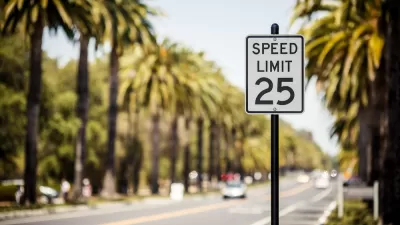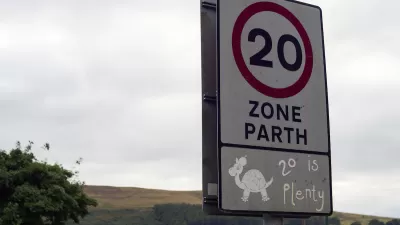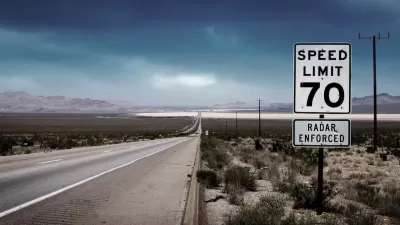More than half of drivers would be comfortable with speed-limiting technology or audio and visual signals warning them they’ve gone over the speed limit.

A new survey from the Insurance Institute for Highway Safety (IIHS) shows that over 60 percent of the more than 1,800 drivers surveyed wouldn’t mind if their cars provided ‘audible and visual’ warning signals when they exceed the speed limit.
According to a piece in GovTech by Dave Werner, “about half of drivers say they wouldn’t mind technology that makes the accelerator pedal harder to press or automatically restricts speed.”
The survey reveals a surprising level of comfort with speed governing technologies, also known as Intelligent Speed Assistance (ISA), hinting that their adoption may not be as difficult in the United States as some have hypothesized. This matters because “Any version of ISA likely to be adopted in the U.S. would give drivers the option to switch it off, so it will only be beneficial to the extent that the public finds it acceptable.” The European Union is already requiring the technology as of this July.
As Werner explains, “More robust ISA systems sound a warning or flash an alert when the driver exceeds the limit — or when they exceed it by more than a specific amount. Others provide accelerator feedback — making the pedal harder to push — or restrict power to the engine to prevent the driver from going too fast.”
An even higher number of respondents said they would like to see the speed limit prominently displayed (80 percent), while 70 percent wanted an unobtrusive tone to notify them of speed limit changes, signaling a preference for ‘advisory systems’ over those that physically intervene.
FULL STORY: Study: Most Drivers OK With Anti-Speeding Technology

Trump Administration Could Effectively End Housing Voucher Program
Federal officials are eyeing major cuts to the Section 8 program that helps millions of low-income households pay rent.

Planetizen Federal Action Tracker
A weekly monitor of how Trump’s orders and actions are impacting planners and planning in America.

Ken Jennings Launches Transit Web Series
The Jeopardy champ wants you to ride public transit.

Crime Continues to Drop on Philly, San Francisco Transit Systems
SEPTA and BART both saw significant declines in violent crime in the first quarter of 2025.

How South LA Green Spaces Power Community Health and Hope
Green spaces like South L.A. Wetlands Park are helping South Los Angeles residents promote healthy lifestyles, build community, and advocate for improvements that reflect local needs in historically underserved neighborhoods.

Sacramento Plans ‘Quick-Build’ Road Safety Projects
The city wants to accelerate small-scale safety improvements that use low-cost equipment to make an impact at dangerous intersections.
Urban Design for Planners 1: Software Tools
This six-course series explores essential urban design concepts using open source software and equips planners with the tools they need to participate fully in the urban design process.
Planning for Universal Design
Learn the tools for implementing Universal Design in planning regulations.
Heyer Gruel & Associates PA
Ada County Highway District
Institute for Housing and Urban Development Studies (IHS)
City of Grandview
Harvard GSD Executive Education
Toledo-Lucas County Plan Commissions
Salt Lake City
NYU Wagner Graduate School of Public Service





























